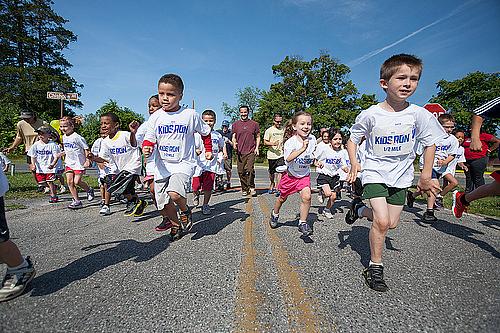Moving 875,000 Children From One State Insurance Plan To Another No Easy Task

From Malina Yang’s perspective, the transition of 875,000 California kids from Healthy Families, a low-cost health insurance program for kids and teens, into Medi-Cal, the state’s version of Medicaid, is not going as smoothly as planned.
“Our families have been left without help, without understanding and with no one able to answer their questions,” Yang, a health advocate for Lao Family Community Empowerment in Stockton, said during her testimony before a joint hearing of the Assembly Health Committee and the Assembly Budget Subcommittee on Health and Human Services last Thursday in Sacramento.
Yang told the story of one family that’s been denied by Medi-Cal three time since receiving a transition notice.
“[The mother] has three children, two of whom see specialists and are out of medication, and now they have no insurance coverage,” Yang explained to the committees.
In December, as the transition loomed, I reported that health advocates were concerned that children, especially low-income kids from rural counties, could lose their access to medical care. Advocates also questioned whether the state had established an adequate monitoring system to oversee the change.
The first wave of children were put in the new program January 1, and the Department of Health Care Services issued its first required, monthly report about their progress on February 15. The report states that 178,133 children were successfully transitioned into Medi-Cal at the beginning of this year, and just one percent of children had to choose a new primary care provider.
But when children’s health advocates released their own analysis last month, they gave the state a C- for the overall transition so far, and dinged the state with a D for the quality of its first monthly monitoring report. They said the report contains no information about whether the 1,847 children who transitioned into Medi-Cal were promptly connected with a new doctor, able to obtain care quickly, and maintain their health, according to a news release.
“It’s hard to know what a successful transition would look like, because there really isn’t enough monitoring and evaluation in place,” Kelly Hardy, director of health policy for Children Now, told me in a phone interview this week. She said the state needs to set benchmarks, to determine if the transition is successful or not.
The initial stage of changing programs was expected to go relatively smoothly compared to the later phases. That's because the first group of kids likely did not need to switch health plans, and were expected to be able to keep their doctors. Later phases will likely prove more complicated -- requiring families to choose new plans and providers, according to advocates.
The advocates' report card gave the state an A for maintaining access to care in this first phase - but that doesn't mean there's not confusion about what the transition will mean for children's access to care.
"Parents are getting notices that are not clear and thorough," Yang said in her testimony. "Parents are not told who will be their providers or if they're going to stay with their current provider."
Health reporters should keep an eye on this transition, and document if families - or the information they need about their new coverage - are falling through the cracks. Reporters can follow the state’s monthly reports on the transition and reach out to advocates and others who have a grassroots perspective on the shift. (Emily Bazar, senior reporter for the California HealthCare Foundation’s Center for Health Reporting, offered great tips in my December post on the issue.)
“I think there’s a lot of confusion out there unfortunately, and it does not just pertain to the counties where they’re already transitioned – it’s sort of widespread,” said Hardy of Children Now.
This, she said, “shows how important it is to have really clear and very consistent information going out to families, providers, county workers, and community-based organizations, so that everybody really gets the information that’s needed.”
Image by Ft. Meade via Flickr

